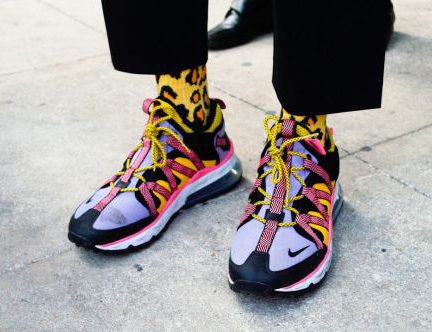Street style has become a prominent aspect of fashion culture, with individuals using their personal style to express themselves. Over the decades, street style has undergone significant evolution, reflecting the changing times and societal influences. From the rebellious spirit of the 1950s to the eclectic and diverse trends of the present day, street style has continuously transformed, leaving a lasting impact on the fashion industry.
The 1950s: The Birth of Rebellion
The 1950s marked the birth of street style as we know it today. This era saw the emergence of the greaser subculture, characterized by leather jackets, denim jeans, and slicked-back hair. Inspired by icons such as Marlon Brando and James Dean, the greasers rebelled against societal norms and embraced a more rugged and edgy aesthetic. This era laid the foundation for street style, setting the stage for future generations to come.
The 1960s: The Rise of Counterculture
The 1960s witnessed a cultural revolution, with the counterculture movement challenging traditional values and embracing individualism. This era saw the rise of the hippie subculture, characterized by vibrant colors, flowy garments, and a bohemian lifestyle. Street style became a platform for self-expression, with individuals adorning themselves in tie-dye shirts, bell-bottom jeans, and peace sign accessories. The 1960s marked a pivotal moment in street style, as it became a symbol of rebellion against mainstream fashion.
The 1970s: Disco Fever and Glam Rock
The 1970s was a decade of disco fever and glam rock, influencing street style in a significant way. Disco culture brought about a sense of opulence and extravagance, with individuals donning sequined dresses, platform shoes, and wide-legged pants. Glam rock, on the other hand, embraced a more androgynous aesthetic, with artists like David Bowie and Freddie Mercury challenging gender norms through their fashion choices. Street style became a blend of glitz, glam, and individuality, reflecting the vibrant energy of the era.
The 1980s: Bold and Excessive
The 1980s was a decade of excess, and street style was no exception. This era saw the rise of power dressing, with shoulder pads, bold prints, and neon colors dominating the fashion scene. Influenced by pop culture icons such as Madonna and Michael Jackson, street style became a reflection of confidence and self-expression. The 1980s marked a departure from the subdued styles of the previous decades, embracing a bolder and more daring approach to fashion.
The 1990s: Grunge and Minimalism
The 1990s saw a shift in street style, with grunge and minimalism taking center stage. Inspired by the alternative music scene, grunge fashion was characterized by oversized flannel shirts, ripped jeans, and combat boots. Minimalism also gained popularity during this time, with individuals opting for clean lines, neutral colors, and simple silhouettes. Street style became a fusion of rebellion and simplicity, reflecting the changing attitudes of the era.
Present Day: Eclectic and Diverse
In the present day, street style has evolved into a melting pot of influences and styles. With the rise of social media and online platforms, individuals have more opportunities to showcase their personal style to a global audience. Street style has become a platform for self-expression, embracing diversity and individuality. From high fashion pieces to thrifted finds, street style today is a mix of high and low, classic and contemporary. The present day street style scene is a testament to the ever-evolving nature of fashion and the power of personal expression.
In conclusion, street style has undergone significant evolution over the decades, reflecting the changing times and societal influences. From the rebellious spirit of the 1950s to the eclectic and diverse trends of the present day, street style has continuously transformed, leaving a lasting impact on the fashion industry. It is a powerful tool for self-expression, allowing individuals to showcase their unique style and personality to the world. Street style is not just a fashion statement; it is a cultural movement that continues to shape the way we view and interpret fashion.



